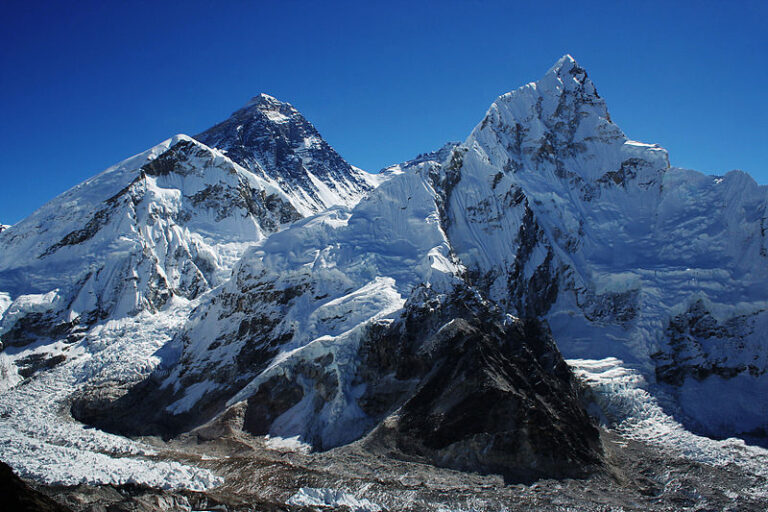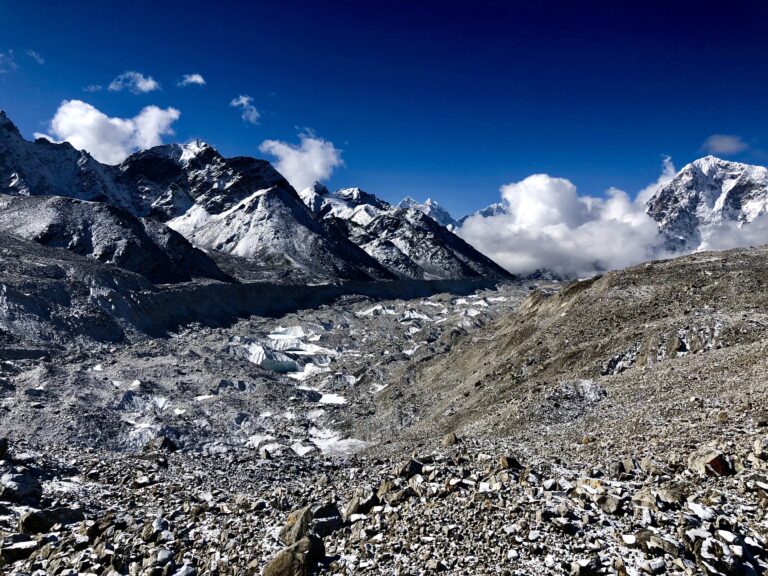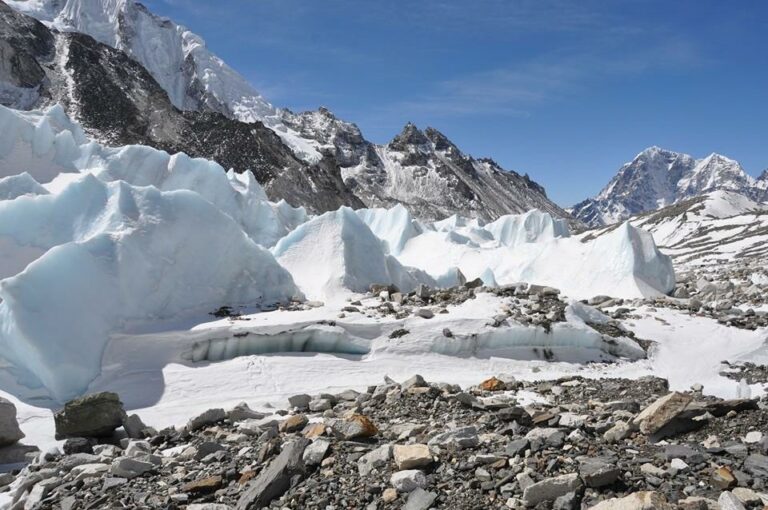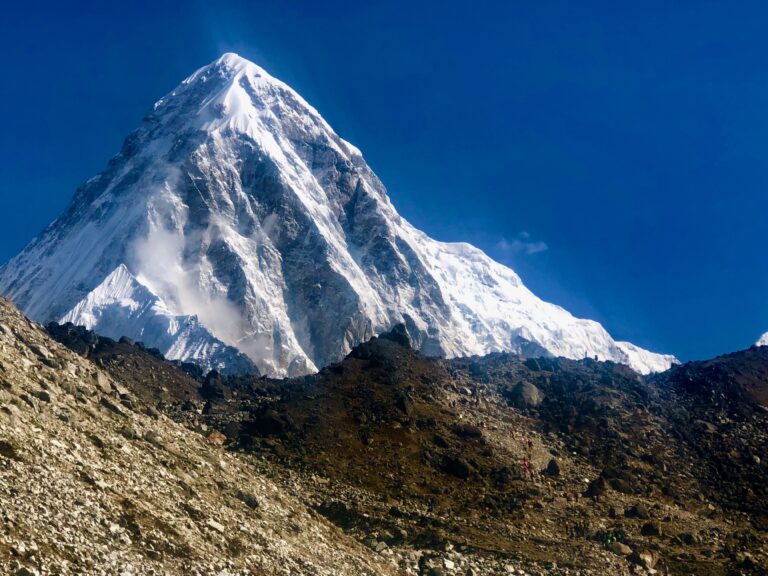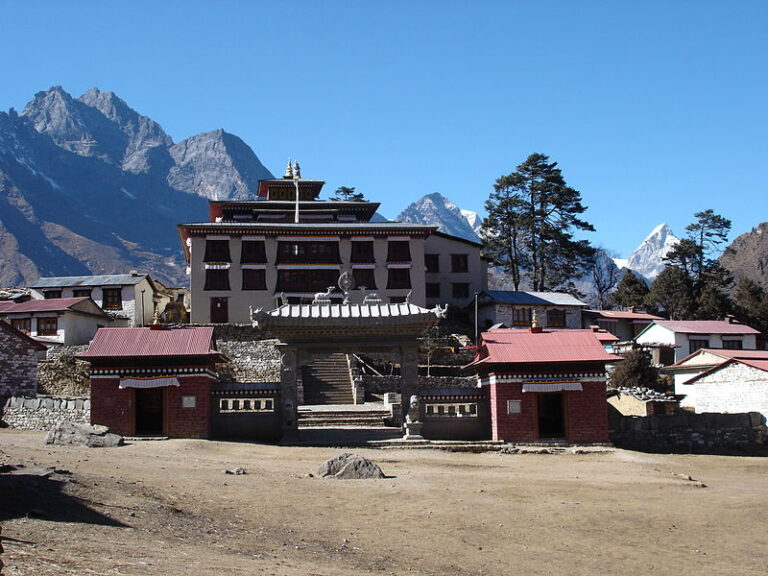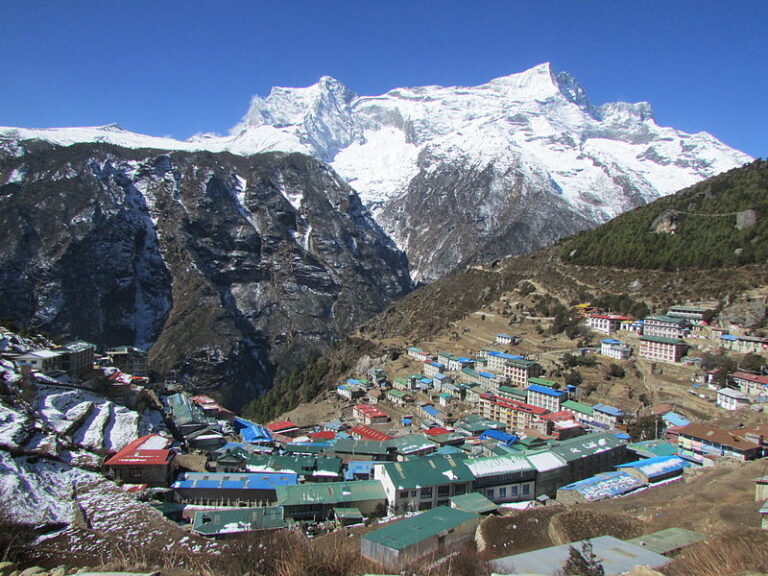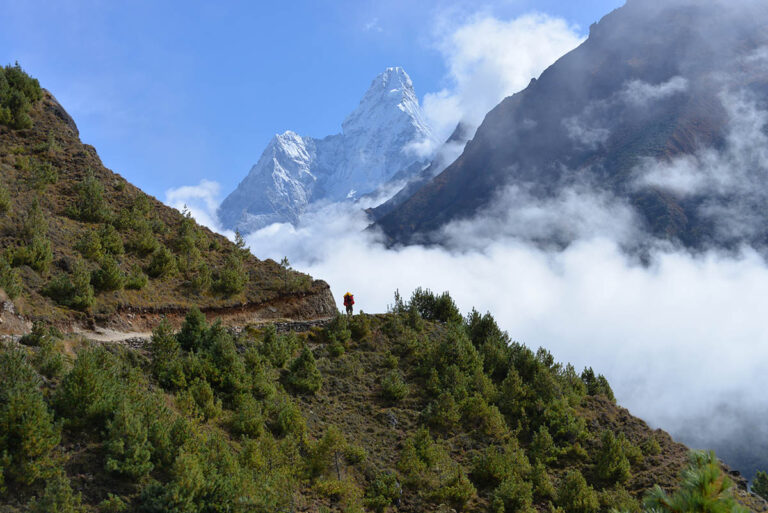Day 1 – Arrive in Kathmandu and escort to Hotel – One of our full-time staff will meet you at the airport and escort you to our hotel in the Thamel district of Kathmandu. You can arrive early and do a half-day trip around Kathmandu to some cultural sights and get all the remaining necessary items for the trip.
Day 02 – Fly to Lukla and trek up to Phakding village (2600 m.a.s.l) – 3 hours walk – You will make an early morning start for the Twin otter flight to Lukla (2,840m.a.s.l)the gateway to the Khumbu. This is an exciting flight, which should give a glimpse of Everest in the distance as we turn into land in Lukla. In Lukla, we will meet more of our trekking staff and Yaks/ porters and set off for our first night’s stop at Phakding 2,600m. If we arrive early enough we will head to further to Monjo 2,800m. Situated on the banks of the Dudh Kosi, which drains the whole of the Khumbu Region. There are several clean, well-built lodges where we will spend the night. We aim to use the best lodges in all the places we stay.
Day 03 – Trek to Namche bazaar ( 3440 m.a.s.l.)- 5 hours walk – Today we follow the trail to Namche Bazaar. We will enter Sagarmatha National Park. We will then cross the confluence of the Dudh Kosi and the Bhote Kosi on a high suspension bridge and then climb steeply for about two hours up ‘Namche Hill’ to reach Namche Bazaar. This is a prosperous trading town and the capital of the Khumbu Region. Many Tibetans cross the nearby border to trade their wares and the local market is a fascinating spectacle. This is a good place to buy genuine Tibetan artifacts. Just across the valley to the east stand the peaks of Thamserku and Kangtega, both very impressive mountains. We will spend three nights here giving you excellent acclimatization on route to Lobuche peak.
Day 04 – Acclimatization day sight trip to Everest viewpoint and exploration of Khumjung village – we will spend two nights in Namche Bazaar to do acclimatization which that allow our bodies to become acclimatized better to altitudes above Namche Bazaar. On the first morning, we will hike up to Everest viewpoint which is located just top of the Namche Bazaar and commands to see the panoramic view of Thamserku, Amaadablam, Iceland peak, Taboche peak, Nuptse, Everest and it’s beautiful ranges. After hot drinks in Everest viewpoint, we will head towards Khumjung village which a beautiful valley and settlement of Sherpa people. we will explore a beautiful monastery called Khumjung monastery where also can be seen skull of Yeti. after the exploration of Khumjung village we will return to Namche Bazaar and sleep one overnight in the same guesthouse.
Day 05 – Trek to Tengboche (3900 m.a.s.l)- 5 hours walk – From Namche, the well-worn Everest trail contours around the side of the valley, high above the Dudh Kosi. As we follow the path, we will get our first really good views of the great peaks of the Khumbu: Everest, Lhotse, Nuptse, and Ama Dablam. Passing by Sanasa, Phungi tanga villages, half dozen tea shops, we will cross the Dudh Kosi River and make a steep climb to Tengboche, home of an impressive and recently rebuilt monastery. We have enough time to look around the Tengboche monastery and have a cake at the bakery.
Day 06 – Trek to Dingboche (4415 m.a.s.l)- 6 hours walk – The trail until the bottom of the Pangboche is Shaded by rhododendron trees, the trail crosses an airy suspension bridge just beyond Deboche. An hour’s walking from Tengboche will bring us to Pangboche, an excellent viewpoint for Ama Dablam which means (Garland of Mother) in Sherpa language. From here; The trail ascends gradually to Somare village then we will turn up the Imja valley to get Dingboche. There are numerous guesthouses in Dingboche which provides delicious meals and comfortable bedroom with warm Sherpa hospitality.
Day 07- Acclimatization day in Dingboche – Dingboche is a good location to do acclimatization. There are two viewpoints called Dingboche viewpoint and Chhukung-Ri. Both viewpoints requires 3 to 4 hours and give us some of the best views of Island peak, Lhotse, Makalu. You will see Cho Oyu the world’s 6th highest mountain and you will be treated to some of the best views of Ama Dablam.
Day 08 – Trek to Lobuche (4920 m.a.s.l) – 4 hours walk – The trail gently ascends from the yard of the guesthouse and half an 30 minutes of climb appear a beautiful stupa and then we take a gradual up trail above the Pheriche village. one and a had hours walk bring us to Thukla where we will stop to have our lunch. From here, we will climb approximately one hour to get a hilltop that offers to see the magnificent view of Ama Dablam, Thamserku, Lobuche peak, Iceland peak, Taboche peak, Cholatse peak and awesome view of Pheriche village valley to southwards. We will have plenty of time so we will spend the afternoon relaxing and continuing the process of slow acclimatization.
Day 09 – Trek to Gorak Shep (5180 m.a.s.l) – 3 hours walk – After 3 hours of walk bring us to Gorak Shep which is the last available guesthouse in the Everest region and surrounded by numerous of snow-capped peaks and mountains including Mount Everest. We can reach in Gorak Shep at lunchtime so it is possible to explore Everest base camp which may take about 3 hours for a round trip. Everest base camp offers to see huge Khumbu glaciers, glacial lakes, and the grand views of Mount Everest, Nuptse, Lhotse, Lobuche, Pumori, and their neighboring peaks and glaciers.
Day 10 – Sight trip to Kalapathar(5645m.a.s.l) and return to Lobuche and climb up to Lobuche base camp (4700 m.a.s.l) – Early in the morning we will climb up to Kalapathar to see sunrise on the background of white mountains. The climb up to Kala Pathar takes between two to two and a half hours and will be a little bit difficult to walk but the effort is rewarded by the classic view of Everest and the Khumbu Icefall, as well as Lhotse, Nuptse, and Pumori immediately above our head. After the sight of this classic view; we will return to Kala Pathar to pick up our breakfast and then continue trek to Lobuche and Lobuche base camp via the same trail.
Day 11 – Trek to Lobuche Lower camp(5400 m.a.s.l0 – 4hour walk – After breakfast in Lobuche base camp; we will practice abseiling, Jumaring, and get used to our climbing equipment. Then we will head up to Lobuche Lower camp that may take about 4 hours depend on our walking speed and health condition.
Day 12 – Climb up to Lobuche high camp (5615 m.a.s.l) – 3 hours walk – We will wake up in the morning with admirable mountain views which are surrounding us. After breakfast, we will relax and pack all-important gears for the climb and move slowly for the Lobuche high camp that may takes approximately three hours.
Day 13 – Summit the Lobuche peak(6119 m.a.s.l) and trek down to Pheriche village(4200 m.a.s.l)– we will start our climb about 2 AM or 3 AM because this decision will be made based on a wide range of factors. This is a steep ascent and challenging for the fitness climbers, so we need to have the right training and preparation before the climb. The team would aim to summit early around 7 am and return down to Pheriche village.
Day 14 – Trek back to Tengboche(3900 m.a.s.l) – 5 hours walk – We will head towards Tengboche pass by Somare, Pangboche, and Dinbuche village with a beautiful view of Taboche peak, Iceland peak, Nuptse, Thamserku peak and Ama Dablam peak. we will arrive in Tengboche at lunchtime or a little bit later. we will be very tired so will be up early dinner and get ready for sleep.
Day 15 – Trek to Namche Bazaar(3440 m.a.s.l) – 5 hours walk – Begins of the morning we will trek down for one and half hours to get a high suspension bridge then the trail gently ascends to the Sanasa village with great vistas of Nuptse, Thamserku, Ama Dablam and Taboche peak. We will stop in Sanasa village to have our lunch and the rest of the trek would be very pleasant and easy due to walk on the flat trail and beautiful mountain views and river valley.
Day 16 – Trek to Lukla Bazaar(2860 m.a.s.l) – 7 hours walk – After breakfast in Namche Bazaar we will head towards Lukla baZaar which may take 7 to 8 hours depending on our walking speed and health condition. Begins of the trek we will walk on the downhill trail for one and a half hours to get Larja Dobhan where two bridge is hanging over the Dudh Koshi River. From here; the flat trail passes through the Jorsalle, Monjo Chutawa, Benkar, Tok-Tok, Phakding, Ghat, Thado Koshi Chauri Kharka village to reach Lukla Bazaar. Along the trail we will have beautiful views of Thamserku peak, Kusum Kangaru, Chhortens, Stupa, and old monasteries.
Day 17 – We will fly back to Kathmandu- 30 minutes fly – The twin ottar takes about 30 minutes to get Kathmandu. be up for an early breakfast and the flight from Lukla back to Kathmandu. For those eager to see as much of Kathmandu as possible, an early start is worthwhile. You can visit the temples of Pashupatinath and Swayambhunath and districts of Bhaktapur and Patan Durbar Square should also be on your essential to see list while in Kathmandu. There is also plenty of shopping to be done in the Thamel.
Day 18 – Final departure – You will fly back to your homeland with a great experience of Nepal, climbing experience, culture, and tradition of Sherpa people that make you a storyteller among your friends, family, and colleges.
